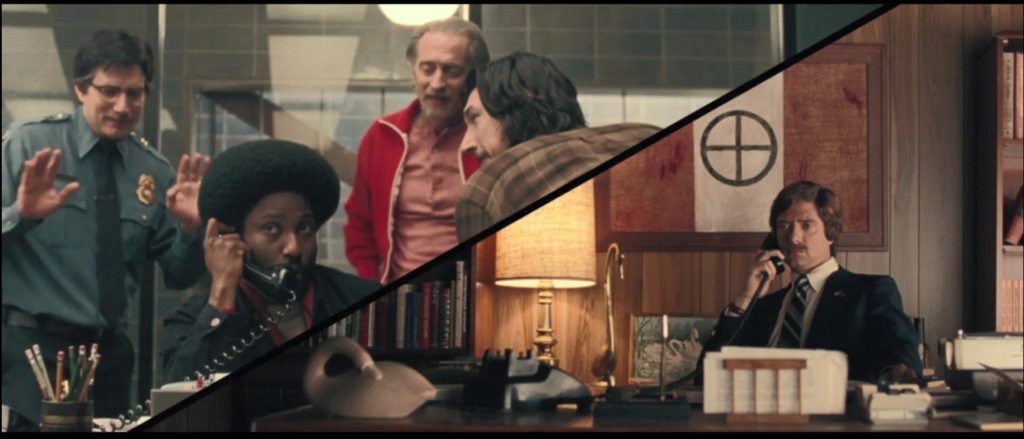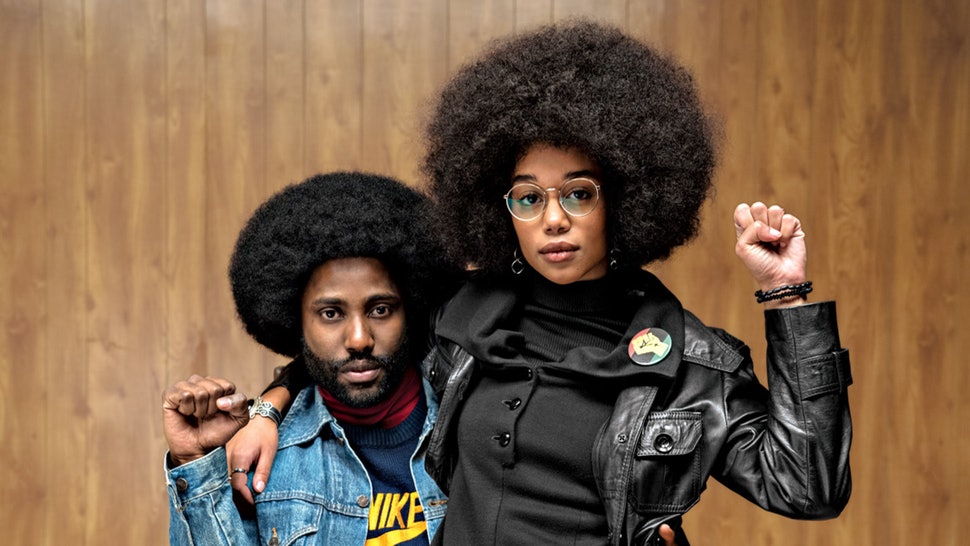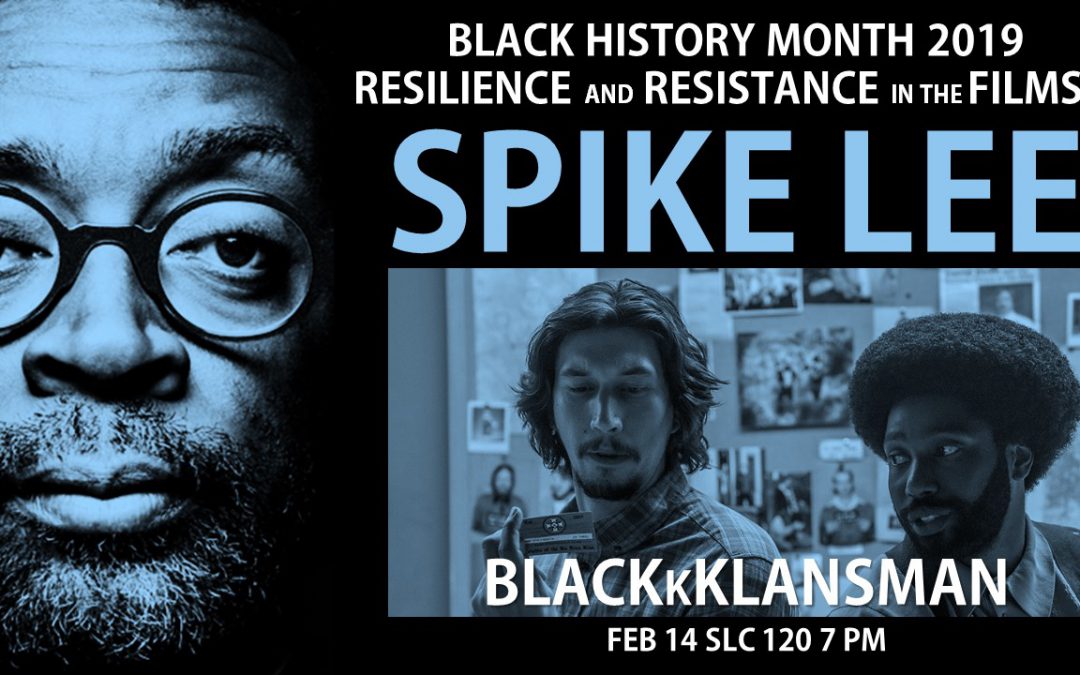Our Spike Lee Film Series celebrating Black History Month kicks off this week with the Oscar-nominated BlacKKKlansman, based on the true story of a black police officer from Colorado Springs infiltrating the Ku Klux Klan in the 1970s. Rated R for violence, language, and sexuality, BlacKKKlansman has been nominated for six Academy Awards, including Adapted Screenplay, Best Supporting Actor (for Adam Driver), Best Director, and Best Picture. The film marks the first Best Picture and Best Director nominations in Lee’s 33-year directing career. Even though BlacKKKlansman takes place in an earlier time period, Lee’s direction emphasizes the racial tensions we still face today.
Blackkklansman will be showing at the Science Laboratory Center on WSU’s campus at 7 pm February 14th, 2019, and we Film Studies students are excited to partner with the Office of Diversity and Inclusion to bring the film to the Winona community. This film is adapted from Ron Stallworth’s own self-authored account of his undercover investigation, one which reads nearly like a police report, but Lee uses the true story to highlight the racial tensions that still exist today. In fact, Lee scheduled its theatrical release in August, 2018, specifically to coincide with the one-year anniversary of the white supremacist Unite the Right rally in Charlottesville, Virginia.
Lee starts the film with some documentary-style footage, as a white supremacist ideologue pushes propaganda at the viewer. Lee has always been at his best a provocateur, surprising and disorienting his viewers with unusual stylistic techniques, and this opening salvo is no exception, as it confronts viewers directly with overt, explicit racism.

BlacKKKLansman begins with racist propaganda masquerading as a history lesson.
Like many of Lee’s earlier films, BlacKKKlansman is another display of auteurism. As scholar Paula J. Massood notes in her introduction to The Spike Lee Reader, “One of the important components of Lee’s filmmaking has been its inward extension of the complexities of race and class toward a self-examination of community” (xvi). BlacKKKlansman shows these complexities by revealing how the Ku Klux Klan members portrayed in the film act towards anyone who isn’t “a pure white American” (as the above character puts it). Lee’s opening scene represents how outrageous this white supremacist ideology actually is.
Ron Stallworth (John David Washington) and “Flip” Zimmerman (Adam Driver) both have skin in the game when they both agree to gain access to the “organization”. The two communities represented in the film are presented in ways that are visually contrasting: some of the sequences switch from one group to the other, while each leader talks about their race’s history.


In this particular scene, the black community is gathered around Jerome Turner, an older gentleman (Harry Belafonte) in front of photographs of lynchings and death of their people. On the contrary, at the Ku Klux Klan initiation, the only thing representing the hate group’s history are crosses and some candles hanging up in the background behind Imperial Wizard David Duke (Topher Grace). Lee’s juxtaposition of these shots indicates to the audience that the white supremacists don’t have or deserve any kind of history and employ religious iconography and symbolism to recruit and intimidate.
Another small detail to look for while watching the film is its unique split shots. Lee uses this technique when Stallworth talks with Duke on the telephone. This shot shows how different each of their lives are. Ron Stallworth is for the most part, accepted at his new job with little to no hesitation, and the company he has with him in the shot shows that. Duke, on the other side has no one with him and the angle he is shot in shows that he is in a rather spacious office which reflects his loneliness.

In a split-screen shot, Ron Stallworth (John David Washington) signs up to be a card-carrying member of the KKK with leader David Duke (Topher Grace).
BlacKKKlansman fares better than some earlier Spike Lee films in the portrayal of women. His first film She’s Gotta Have It (1986), showcases a sexually liberated woman, Nola Darling who isn’t really that complex in comparison to her suitors. Throughout the film, she doesn’t evolve as a character enough to have the audience truly know her. “Her character becomes the projection of a stereotypical sexist notion of a sexually assertive woman—she is not in fact liberated” (hooks 3). On the other hand, Patrice, played by Laura Harrier in BlacKKKlansman, cares deeply for the liberation of her people, and a relationship with Ron only happens after she knows that he is for the cause as well. Nothing sways her, not even a man.

Patrice Dumas (Laura Harrier, depicted here with John David Washington’s Ron Stallworth) is a more fully realized character than many of Spike Lee’s fictional females.
BlacKKKlansman shows a refreshing take on a standout female character who is just as or possibly more involved in the liberation of black people than even the protagonist, Ron Stallworth who is literally involved with the KKK in order to stop them from becoming violent against his people. In one instance towards the beginning of the film, she does not bend over backwards while being greeted by Ron Stallworth. She is the one in authority at that point and he is forced towards the back of the line, she doesn’t give him a free ride just because he said she was pretty.
Black Student Union Leader Patrice Dumas is a fictional creation, one of more than a few liberties Lee takes with the historical facts recounted in Stallworth’s book. But the character is based on real-world women in the Black Power movement, like Angela Davis, who worked with both the Communist and Black Panther parties wrote and spoke about feminism and black power. (Acclaimed African-American director Julie Dash–of Daughters of the Dust fame–is currently working on a biopic of Davis.)
BlacKKKlansman is considered by most critics a significant return to form for Spike Lee and one of the year’s best films. We hope you’ll find it as funny, challenging, and provocative as we have, and for Black History Month we guarantee viewers will leave the auditorium reflecting on how these events of the 1970s reflect our turbulent times today. BlacKKKlansman is the first film in our series and admission is free for all. We hope to see you there and to the showings following!

The Black History Month Spike Lee Film Series continues with four more acclaimed films.


Recent Comments